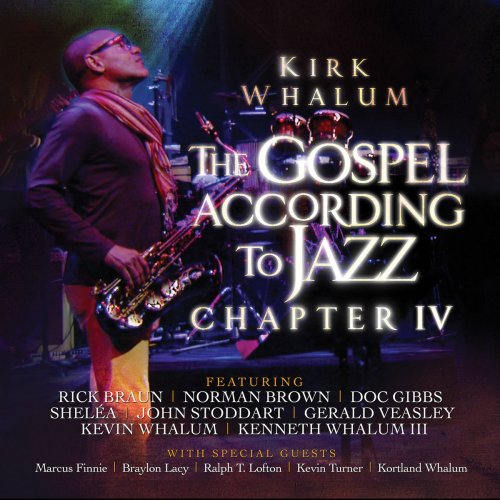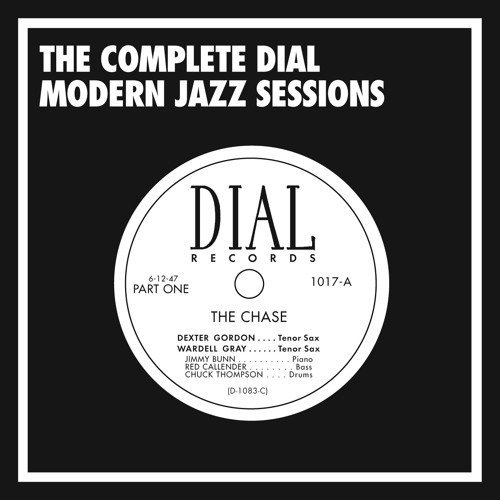Francesco Galligioni, Rolando Moro, Roberto Loreggian - Benedetto Marcello: Complete Cello Sonatas (2025)

Artist: Francesco Galligioni, Rolando Moro, Roberto Loreggian
Title: Benedetto Marcello: Complete Cello Sonatas
Year Of Release: 2025
Label: Da Vinci Classics
Genre: Classical
Quality: flac lossless (tracks)
Total Time: 00:55:51
Total Size: 322 mb
WebSite: Album Preview
TracklistTitle: Benedetto Marcello: Complete Cello Sonatas
Year Of Release: 2025
Label: Da Vinci Classics
Genre: Classical
Quality: flac lossless (tracks)
Total Time: 00:55:51
Total Size: 322 mb
WebSite: Album Preview
01. Sonata No. 1 in F Major: I. Largo
02. Sonata No. 1 in F Major: II. Allegro
03. Sonata No. 1 in F Major: III. Largo
04. Sonata No. 1 in F Major: IV. Allegro
05. Sonata No. 2 in E Minor: I. Adagio
06. Sonata No. 2 in E Minor: II. Allegro
07. Sonata No. 2 in E Minor: III. Largo
08. Sonata No. 2 in E Minor: IV. Andante
09. Sonata No. 3 in A Minor: I. Adagio
10. Sonata No. 3 in A Minor: II.
11. Sonata No. 3 in A Minor: III. Largo
12. Sonata No. 3 in A Minor: IV. Allegro
13. Sonata No. 4 in G Minor: I. Adagio
14. Sonata No. 4 in G Minor: II. Allegro
15. Sonata No. 4 in G Minor: III. Largo
16. Sonata No. 4 in G Minor: IV. Allegro
17. Sonata No. 5 in C Major: I. Adagio
18. Sonata No. 5 in C Major: II. Allegro
19. Sonata No. 5 in C Major: III. Largo
20. Sonata No. 5 in C Major: IV. Allegro
21. Sonata No. 6 in G Major: I. Adagio
22. Sonata No. 6 in G Major: II. Allegro
23. Sonata No. 6 in G Major: II. Grave
24. Sonata No. 6 in G Major: IV. Allegro
25. Sonata in B-Flat Major: Largo.
26. Sonata in B-Flat Major: II. Vivace
27. Sonata in B-Flat Major: III. Adagio
28. Sonata in B-Flat Major: IV. A tempo giusto – Vivace
Benedetto Marcello, a Venetian aristocrat and magistrate, was also a devoted composer whose music marries scholarship with lyricism. Though not a full-time musician, he cultivated his art in the patrician “academies” – private salon gatherings where poetry, music, and debate mingled in Venice palaces – and over the years he produced a substantial body of work. A man of many talents, Marcello composed in nearly every genre: he wrote sacred psalm settings and oratorios, operas, nearly 400 solo cantatas, as well as concertos and chamber works, all while pursuing his public career. He was not the only composer in his family – his elder brother Alessandro was also an accomplished musician. Together the Marcello brothers were prominent figures in the musical life of their city. Marcello’s works earned admiration across Europe: Johann Sebastian Bach transcribed a concerto of his, and the composer’s satirical treatise Il teatro alla moda (1720) testifies to his keen insight into the musical fashions of his time, skewering the vanities of the contemporary opera scene. Among his instrumental creations, the six sonatas for violoncello and basso continuo stand out as a quiet cornerstone of the Baroque cello repertoire, blending patrician elegance with heartfelt expression.
The VI Sonata a Violoncello Solo e Basso Continuo op. 1 were published around 1732 and quickly disseminated across Europe. Though published relatively late in Marcello’s career, they may have been composed earlier – his youthful output shows a predilection for the cello, hinting that these sonatas were a long-cherished project. They appeared almost simultaneously in Amsterdam and London, oddly labelled as Marcello’s op. 1 in one edition and op. 2 in another. Such numbering confusion did not hinder the music reception; these works found favour among cultured amateurs and connoisseurs alike. Far from mere teaching pieces, they brim with poetic expression and refined artistry, offering both accessibility and depth. In embracing the cello as a solo voice, Marcello was joining a broader trend of his time: across Italy, composers were beginning to champion the cello expressive possibilities, elevating it from its traditional continuo role to that of a melodic protagonist.
Each sonata follows the four-movement slow–fast–slow–fast pattern of the Italian sonata da chiesa, a framework upon which Marcello paints a rich array of affetti (affects or moods). The opening Largo or Adagio of each sonata is grave and expressive, establishing a contemplative atmosphere. These introductions often speak with a stately, patrician dignity, their measured rhetoric reflecting Marcello’s aristocratic poise. Here Marcello’s gift for melody shines: the cello solo line unfolds like an eloquent orator’s speech, with long, arching phrases voiced over the gentle pulse of the continuo. Steeped in vocal music, Marcello imbues these instrumental solos with an almost operatic cantabilità – the cello indeed sings as if it were a human voice. After these soulful openings, each sonata shifts into a brighter Allegro, where the cello engages in lively dialogue with the continuo. Here Marcello often hints at the vigorous Italian style of his day – rapid sequences, buoyant rhythms, and even touches of learned counterpoint enliven the texture. Some Allegro themes unfold with Corellian clarity or Vivaldian energy, yet always with Marcello’s own melodious touch. Even when the writing grows imitative or contrapuntal, it remains light on its feet, balancing intellectual craft with Italian tunefulness. For example, the broad opening theme of the Allegro of the Sonata no. 1 carries a stately grandeur that even recalls Handel’s style, reflecting how Marcello’s music could bridge Italian and northern tastes. The third movement of each sonata returns to a slow cantabile style, offering another moment of introspection. Often these Largos feel like wordless arias suffused with gentle melancholy. For example, in the Sonata no. 2 in e minor the cello traces a plaintive lament above the steady tread of the bass, encapsulating Marcello’s pensive, poetic voice. Likewise, the Largo of the Sonata no. 6 in G major sings with a gentle, prayerful calm, the phrases of the cello are suspended over a hushed backdrop of chords. In such pages the music seems to speak from the soul, demanding the performer’s most delicate nuance. Each sonata concludes with a lively Allegro finale that lifts the music from reverie into spirited motion. Often these concluding movements bear a dance-like character. Notably, Sonata no. 4 in G minor ends with a true gigue – a lilting 6/8 dance brimming with rustic vitality, a delightful surprise in an otherwise elegant collection. Elsewhere one might sense the stately tread of a minuet or the swirl of a corrente in these concluding pieces. Across the sonatas, the finales provide a cheerful, graceful close, with cello and continuo playfully exchanging phrases in a lively dialogue.
The basso continuo – realized here with harpsichord and a second cello – is fundamental to these sonatas. In Marcello’s time, a keyboard would join with a sustaining bass instrument to provide a full, rich accompaniment. The London edition of these sonatas mentioned only a harpsichord, but Marcello surely envisaged the fuller texture common in Italy. This pairing lends harmonic depth and warm resonance beneath the solo cello. At times the basso continuo even engages in gentle dialogue with the solo line, rather than merely doubling it. By including a second cello along with harpsichord, the performers recreate the sonorous foundation these sonatas would have enjoyed in an 18th-century Venetian salon.
Marcello composed at a time of lively international exchange in music, when French and Italian styles were often blended in fashionable synthesis – what French critics termed “les goûts réunis”. Though Marcello’s sonatas are rooted in the Italian tradition, with its singing lines and expressive gestures, they also possess a certain clarity and poise that would have appealed to a French ear. Indeed, their balanced phrases and elegant contours suggest that Marcello, knowingly or not, partook of this pan-European aesthetic. It is no surprise that these works were widely embraced in London and Amsterdam; their cosmopolitan charm transcended regional styles, speaking a universal musical language of the Baroque. Despite their quality, Marcello’s cello sonatas long languished in the shadow of those by his contemporary Antonio Vivaldi, whose flashier virtuosity dominated audiences’ attention. Indeed, one of Marcello’s Sonata no. 4 was later known mainly as a student etude in the 19th century, rather than as concert music. In recent decades, however, the revival of Baroque music has brought these works back into the light. We now recognize them as finely crafted gems of the repertoire – intimate chamber sonatas that favour expressive depth over flashy display. Marcello’s writing is idiomatic for the cello, exploring its warm low register and sweet upper voice, always placing musical poetry above virtuosity.
In a remarkable twist of fate, a seventh Marcello cello sonata in B-flat major was recently unearthed in manuscript at Venice’s historic Cappella Marciana. The manuscript was incomplete, but Francesco Galligioni undertook to reconstruct the missing sections with scholarly care, faithfully in Marcello’s style. This newly completed Sonata in B-flat major, likely unheard for nearly three centuries, follows the same four-movement pattern and blends seamlessly with the original six. The rediscovery of this work adds a fresh chapter to Marcello’s legacy, reminding us that even in the well-charted seas of Baroque music, treasures can still be found.
As the final chord fades, one feels an intimate connection with an Enlightenment-era soul. The refined, sincere, and poetic voice of the composer speaks across the centuries through these sonatas, carrying echoes of Venice’s golden age, the splendour of its churches, the elegance of its salons, and the serenity of its canals. By shunning empty virtuosity in favour of nuanced expression, he achieved a timeless eloquence that still captivates modern ears. Enriched by the resurrection of the lost B-flat sonata, this collection forms a portrait of a composer who, though an amateur by profession, captured the soul of the Baroque.
![Enrico Zanisi - Blend Pages (2025) [Hi-Res] Enrico Zanisi - Blend Pages (2025) [Hi-Res]](https://www.dibpic.com/uploads/posts/2022-12/1670308427_enrico-zanisi-blend-pages-2018.jpg)




![Clifton Chenier - Black Snake Blues (1986 Edition) (1986) [Hi-Res] Clifton Chenier - Black Snake Blues (1986 Edition) (1986) [Hi-Res]](https://img.israbox.com/img/2025-12/20/5hzj0ndlb0r4b8ignhx86mdc7.jpg)
![Lionel Hampton - Many Splendored Vibes (Remastered) (2022) [Hi-Res] Lionel Hampton - Many Splendored Vibes (Remastered) (2022) [Hi-Res]](https://www.dibpic.com/uploads/posts/2025-12/1766397160_lhsv500.jpg)
![Philippe Chrétien, Jeannot Steck - Eclipse - The Album (2025) [Hi-Res] Philippe Chrétien, Jeannot Steck - Eclipse - The Album (2025) [Hi-Res]](https://www.dibpic.com/uploads/posts/2025-12/1766208210_folder.jpg)
